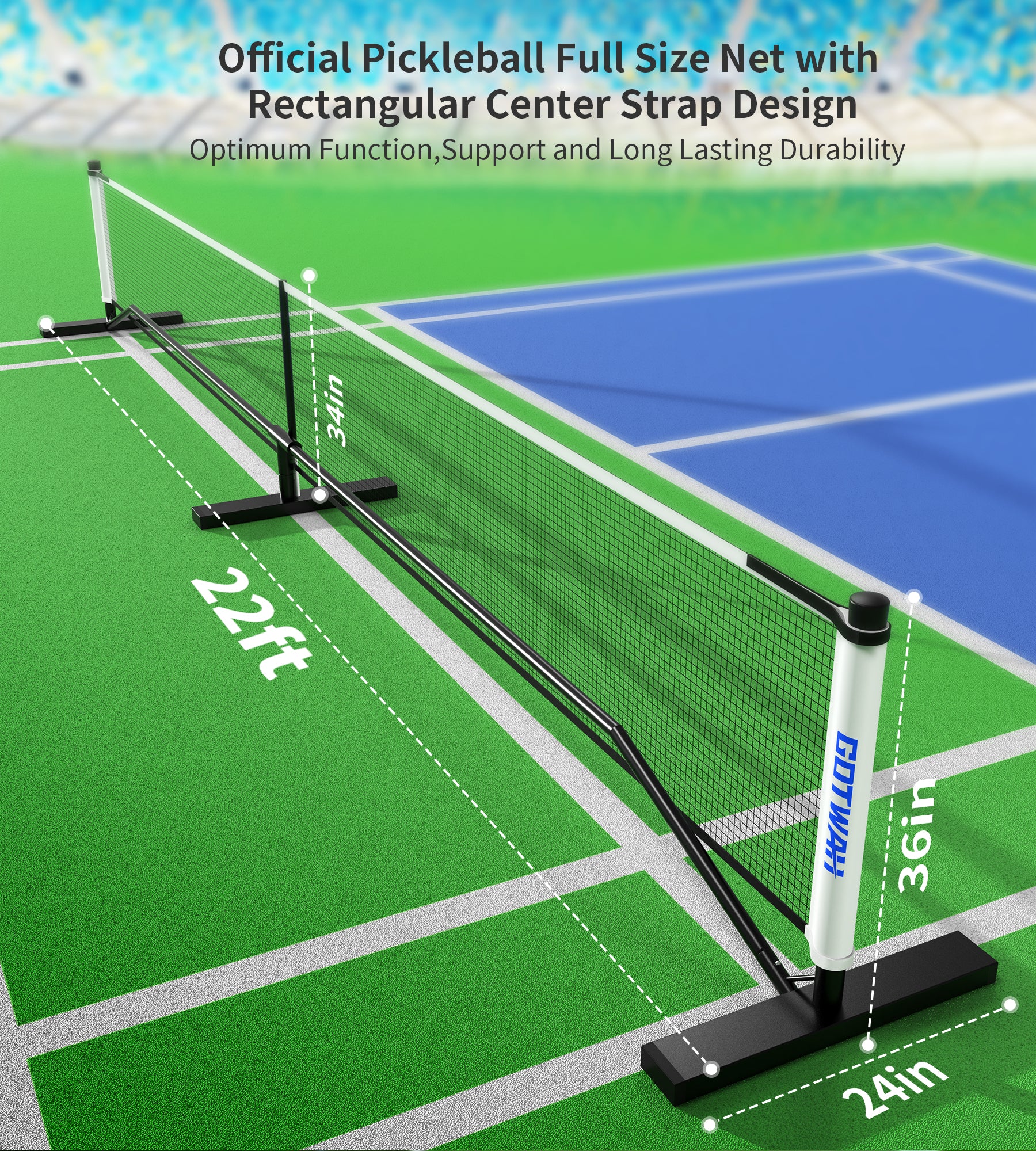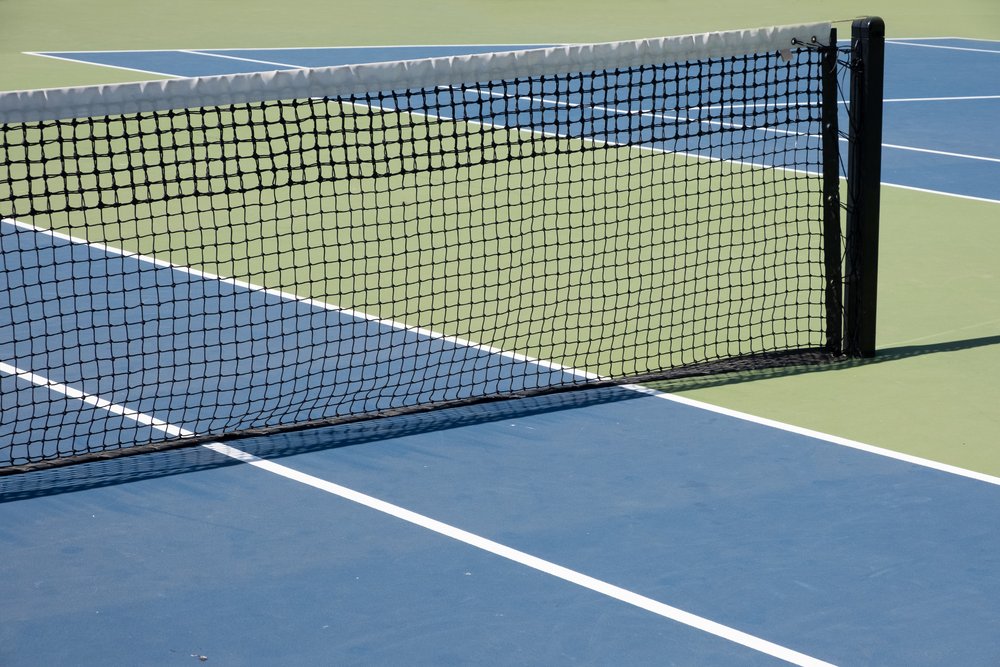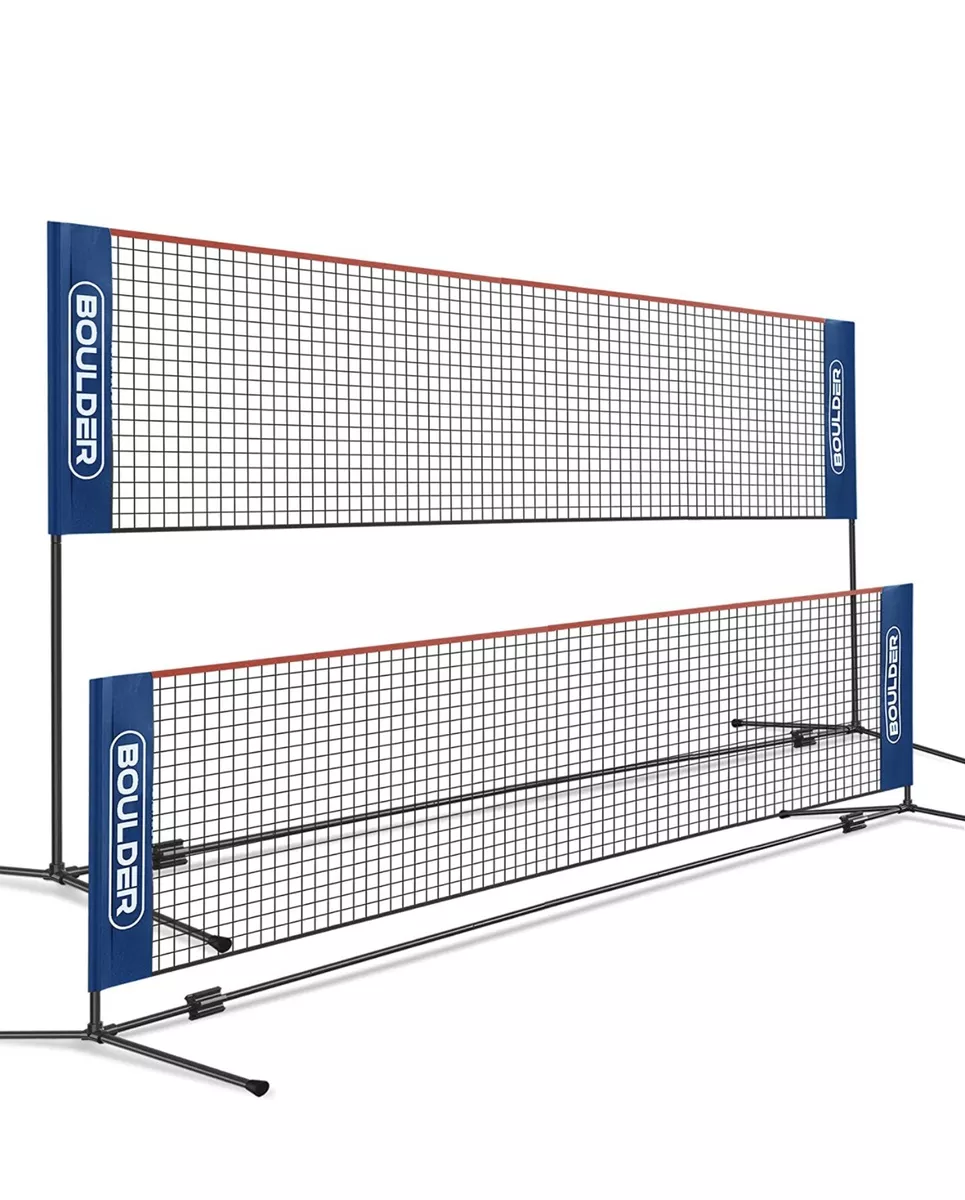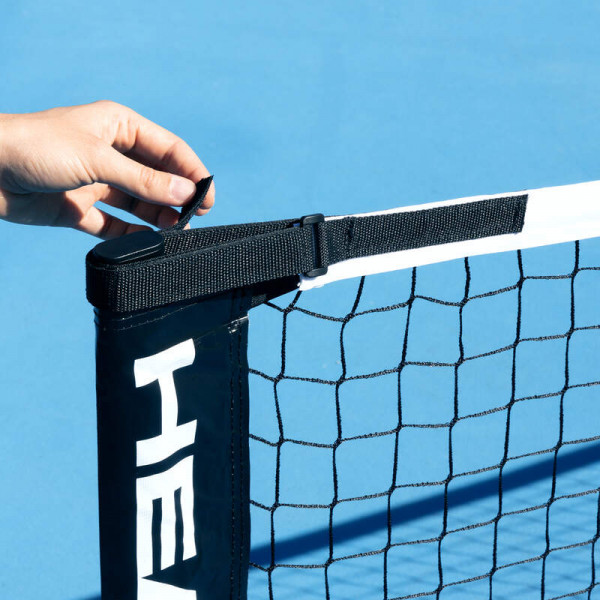The net: understanding pickleball net height and why it matters
Pickleball net height is a fundamental rule of the game, ensuring a level playing field for all players and contributing to a fair and enjoyable experience. A net that is too high or too low can significantly impact the flow of the game, the difficulty of shots, and the overall fairness of the competition. While the official net height might seem like a simple detail, it plays a vital role in shaping the game’s dynamics and the strategic decisions players make on the court. In this article, we’ll delve into the intricacies of pickleball net height, why it matters, the necessary equipment for setting up your net, and how to maintain it for consistent gameplay.

Official pickleball net height
Net height at the sidelines
According to multiple authoritative sources, the official pickleball net height at the sidelines in the United States is 36 inches (91.44 cm). This standard, established by the USA Pickleball Association (USAPA) and the International Federation of Pickleball (IFP), ensures that the game remains consistent and fair across different courts and tournaments. At 36 inches, the sidelines’ height plays a crucial role in defining the boundaries for shot trajectories and overall game dynamics.

Net height at the center
In contrast to the sidelines, the center of the pickleball net is set slightly lower at 34 inches (86.36 cm). This slight dip from 36 inches at the sidelines to 34 inches at the center is designed to accommodate the dynamics of the pickleball game, ensuring consistent play regardless of shot placement. The USA Pickleball Rulebook and Equipment Standards Manual specify this dip to promote a balanced and strategic competitive environment. Adhering to these height specifications aids in maintaining the integrity of the sport and levels the playing field for all skill levels.
The importance of net height

Impact on gameplay
Pickleball net height plays a paramount role in influencing gameplay dynamics. When set at the correct height, the net ensures that all players face similar challenges, fostering an environment where skill and strategy prevail. Proper vertical alignment of the net is essential for shots like volleys, overheads, and dinking. An improperly set net can elevate or reduce the difficulty of these shots, potentially skewing the balance of play and giving undue advantage to certain players.
For instance, a higher net can amplify the difficulty of landing a successful dink shot, while a lower net can overly simplify the same, making rallies less competitive and thrilling. The accuracy and consistency in gameplay key elements of practice and competitive matches are directly tied to adhering to official net height standards.
Impact on strategy
A net too high or too low disrupts the delicate balance of strategy in pickleball. The low center height (34 inches) encourages dinking, a shot that requires finesse and control, while the higher sideline height (36 inches) leverages powerful volleys and overhead smashes. The interplay between these shots defines the strategic richness of pickleball, with players needing to constantly adapt their tactics based on shot placement and opponents’ positioning.
In contrast, other racquet sports like tennis or badminton set their nets to different heights, inherently leading to different strategic emphases. Therefore, understanding and adhering to the official pickleball net height ensures that players can develop and practice the appropriate strategies that the game demands.
Setting up your pickleball net

Required equipment and tools
Setting up a pickleball net to the correct height requires specific equipment and tools to ensure accuracy and adherence to regulations. The necessary items include:
- Pickleball net: Standard width is 22 feet, height comprising 36 inches at the sidelines and 34 inches at the center.
- Net posts: These are typically 36 inches high at the posts to support the net.
- Measuring tape: A critical tool for verifying net heights at the sidelines and center.
- Leveling device (e.g., spirit level): Ensures that the net is level and evenly suspended from one end to the other.
- Stakes or ground anchors: Essential for securing the net posts, especially for portable Pickleball net and outdoor setups.
Having the right equipment ensures that setting up the net is straightforward, accurate, and conducive to fair play.
Read more: Portable vs Permanent Pickleball Nets: Choosing the Right Setup for Your Game
Step-by-step installation guide
Here’s a detailed step-by-step guide to correctly set up your pickleball net:
- Assemble the base frame: Start by assembling the stand’s base frame following the manufacturer’s instructions, ensuring all the parts are securely attached.
- Insert and secure the posts: Attach the end posts into the respective bases and ensure they stand firm.
- Attach the net to the posts: Secure one end of the net to a post, then stretch it across the court and attach it to the other post. The net should be centered over the court’s centerline.
- Adjust tension and measure: Use the adjustable straps to tension the net so that it is taut. Measure the height at the sidelines to ensure it is 36 inches, and adjust if necessary. Similarly, check the center height to confirm it is 34 inches.
- Secure the net posts: Use stakes or anchors to stabilize the posts, ensuring they don’t move during play.
- Final check: Double-check the net’s alignment, tension, and height, making any small adjustments as needed to meet the official specifications.
Proper installation guarantees that players experience consistent gameplay conditions, crucial for fair competition and skill development.
Maintaining your pickleball net

Routine care tips
Routine maintenance of your pickleball net ensures longevity and optimal performance. Here are some essential care tips:
- Regular inspections: Check for wear and tear, including frayed areas and broken ropes, and address any issues immediately.
- Tension adjustments: After each game, verify the net’s tension and adjust as necessary to maintain the required tension level.
- Protect from moisture: Store the net in a cool, dry place to prevent mold and mildew. If the net becomes wet, let it dry completely before storing.
- Proper storage: Use appropriate net straps and supports when storing the net to prevent unnecessary sagging or stress on the net structure.
- Cleaning: Clean the net bi-weekly using a mild detergent and a soft brush to remove dirt and debris.
Adhering to these routine care practices will help prolong your net’s life and maintain its functionality.
Common issues and fixes
Even with diligent care, some common issues can arise with pickleball nets. Here are the most frequent problems and their solutions:
- Broken or frayed ropes: Replace with high-quality ropes of the correct size.
- Damaged netting: Use a net repair kit to patch small holes and tears.
- Loose tension: Adjust the tension using tensioning devices like ratchet systems.
- Rusty hardware: Clean and lubricate with rust removers and appropriate lubricants to ensure smooth operation.
By addressing these issues promptly and effectively, you can keep your pickleball net in excellent playing condition.
Pickleball net height compared to other sports
Tennis net height
The height of a tennis net offers an intriguing point of comparison to pickleball. The standard tennis net height set by the International Tennis Federation (ITF) is 42 inches (106.68 cm) at the posts and 36 inches (91.44 cm) at the center. This is notably higher than a pickleball net, which is 36 inches at the sidelines and dips to 34 inches at the center, reflecting the higher bounces and more powerful shots typical in tennis as opposed to pickleball.
Badminton net height
In contrast, the standard badminton net height is significantly higher than both tennis and pickleball nets. The top of the net stands at 5 feet, 1 inch (154.94 cm) at the ends and 5 feet (152.4 cm) at the center. This pronounced height discrepancy underscores the different dynamics and strategies involved; badminton focuses on rapid reflexes and strategic shuttle placement above the net’s considerable height.
This comparison table summarizes net heights across sports:
| Sport | Sidelines Net Height | Center Net Height |
|---|---|---|
| Pickleball | 36 inches (91.44 cm) | 34 inches (86.36 cm) |
| Tennis | 42 inches (106.68 cm) | 36 inches (91.44 cm) |
| Badminton | 5 feet, 1 inch (154.94 cm) | 5 feet (152.4 cm) |
These differences in net heights influence the respective sports’ gameplay, techniques, and strategies, illustrating how crucial net height is to each game’s unique character.
Pickleball net height FAQs
How high is a pickleball net?
The official pickleball net height is 36 inches (91.44 cm) at the sidelines and dips to 34 inches (86.36 cm) at the center. This standard ensures consistent and fair play across all courts and tournaments.
Are pickleball and tennis nets the same height?
No, pickleball and tennis nets are not the same height. While tennis nets are 42 inches high at the posts and 36 inches at the center, pickleball nets are only 36 inches at the sidelines and 34 inches at the center. This difference in height is tailored to the distinct playing styles and dynamics of each sport.
How high is a tennis net?
The standard tennis net height is 42 inches (106.68 cm) at the posts and drops to 36 inches (91.44 cm) at the center. This official height, set by the International Tennis Federation (ITF), accommodates the powerful serves and volleys characteristic of tennis.
Can you play pickleball on a tennis court?
Yes, you can play pickleball on a tennis court, but some adjustments are necessary. The tennis net should be lowered to meet the pickleball specifications of 34 inches (86.36 cm) at the center and 36 inches (91.44 cm) at the sidelines. Additionally, creating pickleball-specific lines within the tennis court boundaries might enhance the playing experience.
Conclusion
Pickleball net height is a fundamental rule that ensures a fair and enjoyable playing experience for all. By understanding the official regulations and taking the time to check and adjust the net correctly, you can contribute to a more level playing field and ensure that every game is played with fairness and consistency. Before you begin playing pickleball, always check the net height and make sure it meets the official standards. A properly adjusted net can enhance your game, ensure fair play, and create a more enjoyable experience for everyone on the court.
